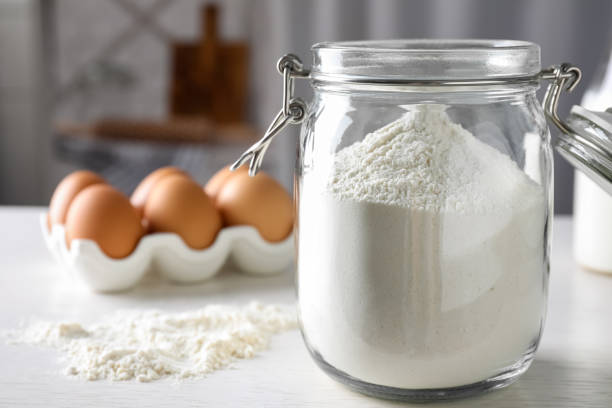
How many times have you reached into your cupboard only to find that the flour you bought last month is crawling with weevils or smells rancid? Proper preparation and storage of flour will help prevent bug infestations and make your flour last for up to 7 months.
Although there's not much you can do if your flour has already gone bad or sprouted bugs, a few simple steps will help to prevent these maladies.
 Proper Storage Steps
Proper Storage Steps
All you need are sturdy, food-grade plastic bags and food-grade containers with lids, your freezer, and a cool, dark spot.
- Put the container of flour in a strong, food-grade plastic bag. If the flour is packaged in paper, put the whole paper bag inside a food-grade plastic bag.
- Remove excess air from the bag and seal tightly.
- Freeze the flour for two days to kill off potential weevils or insect eggs in the flour.
- Remove from freezer after two days and sift the flour into a food-grade plastic container with a tight-fitting lid. Label the container with the expiration date or sell-by date.
- Keep in a cool, clean, dark place to prevent other insects from getting at the flour and to prevent sunlight and moisture exposure, or keep it in the fridge if you're unsure your cupboard is cool enough.
Refined Flours
Producers remove the bran and germ from the wheat to make refined flour from the endosperm. The process results in a fine, soft texture and light or white color. Refined flours include all-purpose, white, bread, cake, and self-rising. These flours do not contain much oil, which causes flour to spoil when it oxidizes, making them more shelf-stable than whole-grain and other varieties.
When you bring it home from the store, put the flour in the freezer for about 5 days to kill any weevil or insect eggs that might be lurking in the package. Then transfer the flour out of the store packaging and into a food-grade container (plastic or glass) with a tight lid. This prevents moisture from creeping in and keeps insects and other pests out. It also blocks odors and flavors from other foods or products stored nearby, which could affect the aroma or taste of the flour.
Store all-purpose and other refined flours in a cool, dry place protected from sunlight. Refined flour keeps up to one year in the pantry under these ideal conditions. For longer storage, or in a warmer climate, stash the flour in the freezer, where it can last for up to two years. The cold does not noticeably affect the texture, so you can easily scoop out just the amount you need, but let the flour come to room temperature before you use it for best results, especially when baking.
Bugs and Rancid Smells
The bugs found in flour and other grains are called weevils. If you find these bugs in your flour (any brownish surface on top of your flour is the eggs), chances are the eggs were there before you purchased it because female weevils lay them inside the grain kernel, and they hatch between one and five months later. If you're unsure, rub some of the brownish flour between your fingers and if you catch a minty odor, that's the bugs. You can also tightly pack some flour up to the rim of a glass and make a flat surface with the help of a knife. Leave the flour exposed to sunlight for a few hours. If the tight surface looks broken, that's the bugs' doing. Toss it.
Rancid smells happen because the fats in whole grain flours oxidize when exposed to air and moisture. Over time, inadequate storage will continue lowering the freshness of your flour, affect the result of your baking, and maybe even make you sick. If your flour already smells musty, it's time to toss it.
When in Doubt
Follow these guidelines when you're not sure if the flour you have at home is still good to use:
- Refined flours like pastry or self-rising flours keep fresh for up to two years but will smell sour when past their prime.
- Nut or seed flours like almond, flax, or hemp should preferably be stored in the freezer, and they can last up to a year. If they have a burnt or bitter taste, that means they're not good anymore.
- Whole-grain flours like wheat, spelt, or barley have just 3 to 6 months of shelf life, so keep them in the fridge and check the expiration date before using. If you catch a funny smell, then it's time to discard them.
Different Types of Flours
By keeping your flour properly stored you're securing its freshness. However, not all flours are made the same and not all keep fresh for the same amount of time. Keeping them in the fridge will give you extra months of use after the expiration date or the sell-by date, but do keep in mind that non-wheat flours like gluten-free and nut flours have different needs. So every time you open your bag of flour, regardless of what it's made of, sniff it for foul odors and check its texture to ensure that no bugs are present.




